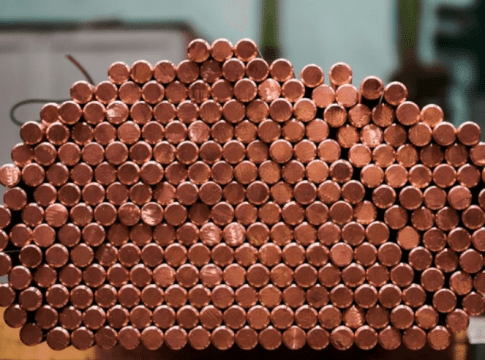Copper Prices Swing as China’s Stimulus Sends Mixed Signals—What’s Next for 2025?
Copper, the third most used metal, plays a crucial role in the energy transition, particularly in electrification and renewable energy. Recent market movements, particularly China’s stimulus measures, have led to significant volatility in copper prices, making the metal’s future uncertain.
China’s Economic Moves Drive Copper’s Price Rollercoaster
Copper futures are actively traded on major platforms like the London Metal Exchange (LME), COMEX, and the Multi-Commodity Exchange (MCX) in India. Copper is the third most used metal globally, particularly in modern industries.
Chile is the top producer, contributing over one-third of the world’s supply, followed by Peru, the Democratic Republic of the Congo, China, the United States, and others. The largest copper importers include China, Japan, India, South Korea, and Germany.
Copper prices have shown significant volatility in October 2024, driven primarily by economic developments in China. The country’s central bank introduced a substantial stimulus package in late September to revive its economy, including monetary measures like lowering interest rates and easing mortgage payments.
RELATED: Copper Prices: Key Factors, Trends, and Outlook
These actions briefly boosted copper demand and drove the London Metal Exchange three-month (LME 3M) copper price to a four-month high of $9,995 per metric ton on September 27.
However, the optimism was short-lived as market participants realized that details about the spending of the stimulus package were unclear. This, combined with a stronger U.S. dollar and weaker demand for copper, led to a price dip.
By October 17, the LME 3M copper price had fallen to $9,506 per metric ton as reported and shown below by S&P Global Commodity Insights.
On Monday, copper futures fell to around $4.31 per pound after gaining in the prior two sessions. This decline was driven by a stronger dollar and rising U.S. Treasury yields as a resilient US economy dampened hopes for significant interest rate cuts by the Federal Reserve.
Meanwhile, investors are watching the upcoming National People’s Congress meeting in China (November 4-8) for updates on debt and fiscal measures.
Production Setbacks Tighten Supply
Global copper supply has faced challenges, particularly from production setbacks in key regions. A significant incident affecting supply was a fire at Freeport-McMoRan Inc.’s Manyar smelter in Indonesia, which delayed the smelter’s production start to early 2025. This event has resulted in adjustments to the concentrate market deficit forecast.
Other production challenges included reduced output at key smelters in China, including Baiyin and Jinxin, further tightening the concentrate supply.
Therefore, the anticipated deficit for 2024 is now at 52,000 metric tons. And a larger deficit of 848,000 metric tons is projected for 2025.
Despite these supply disruptions, treatment charges (TC) for copper concentrates could stay at $35 per dry metric ton in 2025. This suggests that tightness in concentrate supply will persist, potentially causing upward pressure on smelter margins.
Demand Dilemma: EV Boom Bolsters Copper, But Buyers Hold Out for Better Prices
The Chinese market exhibited mixed signals. Following the national holidays in early October, downstream copper buyers anticipated further price drops, leading to a slowdown in new orders.
As a result, production cuts were reported among wire and cable manufacturers. Some buyers shifted to using copper scrap due to its greater availability, delaying purchases of primary copper.
Not all demand indicators were weak. China’s electric vehicle (EV) sector provided a boost, with EV production rising 48.8% year-over-year in September 2024. This trend supported higher demand for copper components, crucial in EV manufacturing.
Copper is the best metal for conducting electricity, so it is critical for EVs and batteries, as well as other green energy sources like wind and solar.
An EV uses about 3x more copper than a regular gas-powered car. As the shift to cleaner energy continues, EVs are expected to increase their share of total copper demand from around 11% in 2021 to over 20% by 2040.
According to BHP’s data, global copper demand will increase by about 70%, reaching over 50 million tonnes annually by 2050. The traded metal will see an average annual growth rate of 2% as shown below.
Source: BHP website
Market Outlook: Copper Prices in 2025
Looking ahead, experts expect copper prices to stay under pressure due to the current balance of supply and demand. However, potential boosts in orders at lower prices and seasonal demand could provide support for prices.
For 2025, the forecast is for a tighter concentrate market, with a predicted shortfall of 848,000 metric tons. This, in turn, could help stabilize prices around $9,825 per metric ton. Despite current challenges, the outlook suggests a mix of cautious optimism and continued volatility in the copper market.
READ MORE: Will AI Drive A Global Copper Shortage? BHP Rings the Alarm
The post Copper Prices Swing as China’s Stimulus Sends Mixed Signals—What’s Next for 2025? appeared first on Carbon Credits.



